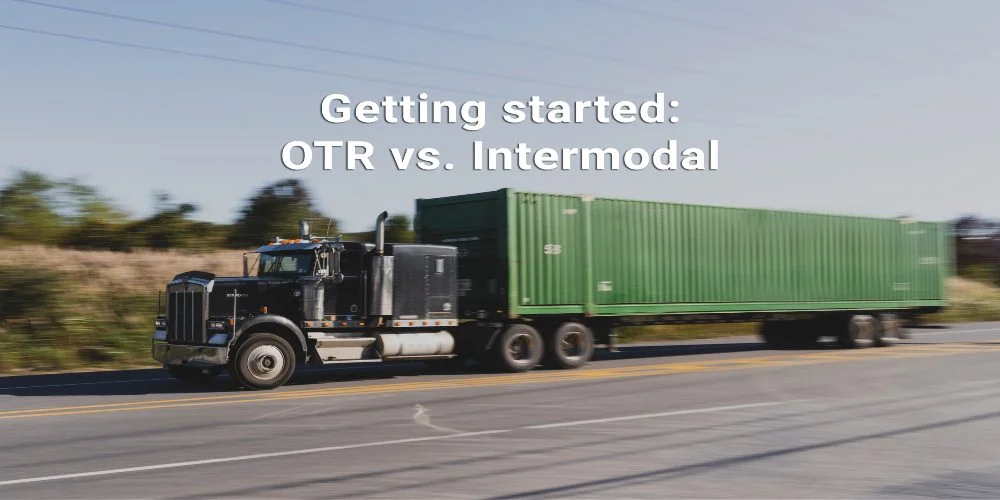Business
5 Ways Intermodal And OTR Trucking Are Similar

Regarding freight transportation, intermodal and over-the-road (OTR) trucking play critical roles in efficiently moving commodities across the country. Intermodal freight transportation relies on rail, while OTR trucking relies on highways. There are several significant parallels between these two forms of transportation, even though their modes of operation may be distinct.
This article will examine the five ways intermodal and over-the-road (OTR) transportation are comparable. It will shine a light on the traits and advantages shared by both types of trucking.
Table of Contents
1. Adaptability: Satisfying A Wide Range Of Shipping Requirements
Shippers can accommodate various shipping requirements by utilizing intermodal or over-the-road (OTR) trucks, which offer amazing flexibility. Intermodal and over-the-road (OTR) transportation can accommodate cargo sizes, types, and delivery needs. Regardless, of moving goods locally or over great distances. Because of their adaptability, they are appropriate for use in industries such as retail and manufacturing. It can also be used in agriculture. All of these strongly demand transportation solutions that can accommodate changing needs.
2. Cost-effectiveness: Striking a Balance Between Efficient Use of Resources and Reasonable Pricing
Need clarification on OTR vs. intermodal trucking? Honest review is that Intermodal and over-the-road (OTR) trucking both provide viable options for organizations looking for transportation solutions that are both efficient and inexpensive from a cost-effectiveness standpoint. The use of intermodal transportation for long-distance shipments frequently proves to be the most cost-effective option. It takes advantage of economies of scale by utilizing several modes of transportation, such as rail and truck, to increase efficiency and lower costs. On the other hand, over-the-road (OTR) trucking provides a direct and time-sensitive alternative ideal for local or regional shipments. This type of transportation offers economic advantages for shorter distances.
3. The Influence On The Environment And The Promotion Of Sustainability
Intermodal shipping and over-the-road (OTR) trucks are both aware of the significance of environmentally friendly transportation. People work hard on them to reduce their negative environmental effects. Compared to over-the-road (OTR) trucking on its own, intermodal transportation’s employment of both rail and truck modes significantly reduces greenhouse gas emissions. In addition, developments in technologies that save gasoline and alternative fuel sources have made it possible for over-the-road (OTR) trucks to become less harmful to the environment. Both modes of transportation can contribute to a greener future for the transportation industry by adopting sustainable methods.
4. Dependability: Making Sure Deliveries Are Made On Time
Both intermodal and over-the-road trucks are devoted to ensuring timely delivery because they recognize the importance of reliability in the freight transportation industry. Intermodal transportation uses the advantages offered by multiple modes of transport to create an uninterrupted and well-connected network. Hence, reducing the likelihood of disruptions and wait times. The over-the-road (OTR) trucking industry, thanks to its direct point-to-point delivery method, provides flexibility in adjusting to shifting delivery schedules and the requirements of individual customers. Both modes of transportation try to fulfill the expectations of their respective audiences by emphasizing dependability.

5. Effectiveness: Maximizing The Potential Of The Supply Chain Operations
Intermodal and over-the-road (OTR) trucks help streamline operations, which is important for the efficiency of any supply chain. Intermodal transportation improves total supply chain efficiency by minimizing congestion and maximizing the use of available resources. This is accomplished using rail for long-haul portions, freeing trucks to concentrate on shorter routes. In a similar vein, the direct delivery method utilized by OTR trucking avoids the requirement for the transfer of cargo. This results in reduced handling risks and shorter travel times. Both approaches contribute to improving efficiency, ultimately to the advantage of both customers and enterprises.
Conclusion
Intermodal and over-the-road (OTR) trucking, both essential components of the business that deals with freight transportation, share several surprising features that make them comparable. Their adaptability, cost-effectiveness, commitment to sustainability, reliability, and efficiency all help meet various transportation requirements and make the most of supply chain operations. These modes of transportation provide options for transportation that are dependable and effective for enterprises of any size, whether it be the mix of rail and trucking that is involved in intermodal or the direct point-to-point delivery method of OTR trucking.
Shippers can make educated decisions tailored to their shipping requirements when they have a solid awareness of the parallels between intermodal and OTR trucking. Each mode has several benefits, each of which can be strategically leveraged to increase operational efficiency and improve the level of satisfaction experienced by customers.
To know more about keep reading Lemony Blog.

-

 Business3 years ago
Business3 years agoHow to Do Long-Distance Moves with Children
-

 Travel2 years ago
Travel2 years agoQuick Guide: Moving To Santa Rosa?
-

 Real Estate3 years ago
Real Estate3 years agoWhy Dubai Festival City is a Great Neighbourhood for Young Learners
-

 Business3 years ago
Business3 years agoIs Guest Posting a Good Inbound Marketing Strategy?
-

 Business1 year ago
Business1 year agoThe Ultimate Guide To Thriving In Your Printing Franchise
-

 Business1 year ago
Business1 year agoExploring The Benefits And Challenges Of Restaurant Franchising
-

 Tech3 years ago
Tech3 years agoCyber Table That Will Change Your Life
-

 Lifestyle1 year ago
Lifestyle1 year agoDallas’ Hidden Gems: 6 Must-Try Restaurants Off The Beaten Path!









Recent Comments